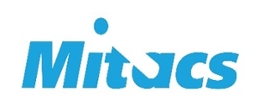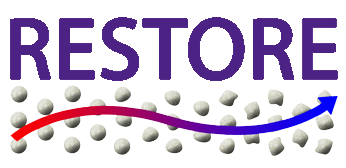Freshwater salinization syndrome
Background
Increasing salinization of fresh surface waters due to excessive salt inputs is a growing threat to aquatic ecosystems. Streams with chloride concentrations above the chronic toxicity guideline are pervasive in areas across Canada. Elevated chloride concentrations in freshwaters can alter the function of aquatic organisms, drive stream acidification, mobilize toxic metals, and promote infrastructure corrosion. The primary source of chloride contamination in temperate climates is road de-icing salt (most commonly sodium chloride) used as a winter de-icing agent on roads, sidewalks, and parking lots. Road salt can enter freshwater streams through various pathways including surface runoff (overland flow), stormwater drainage systems, or through infiltration into the soil and subsequent groundwater transport. Decades of road salt application and subsequent infiltration into groundwater systems has created legacy Cl stores that may act as a persistent source of Cl to streams year-round. Recent studies have found that many streams in the Northern United States and Canada have elevated Cl concentrations not only during the winter and spring when surface runoff and stormwater drainage is important, but also through the summer months.
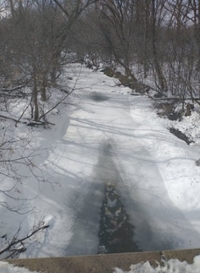
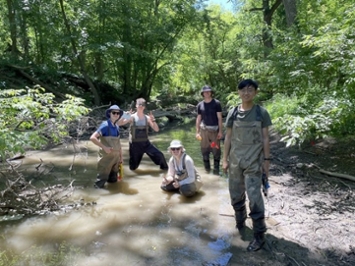
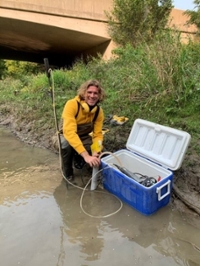
Research Objectives
- Evaluate the role of groundwater pathways in delivering salt to urban freshwater streams across multiple seasons
- Evaluate geophysical tools for rapid, non-invasive detection of high salt groundwater plumes near freshwater streams and lakes
- Assessing the ice-melting performance and environmental impact of alternative non-toxic road salts
Research Methods
Characterization of salt inputs to urban streams
Field investigations are being conducted in multiple urban streams in London, Ontario. Field techniques include (i) detailed characterization of groundwater salt plumes entering stream reaches across multiple seasons, (ii) testing of electrical and electromagnetic imaging methods for identifying salt upwelling zones along stream reaches, and (iii) large scale longitudinal sampling of chloride concentrations and groundwater tracers (radon, dissolved CO2).

Assessment of alternative non-toxic road salts
A suite of laboratory and field tests will be performed to investigate the ice-melting performance and environmental impacts of two new non-toxic proprietary road salts (developed by our industrial partner Cypher Environmental) relative to traditional salts such as sodium chloride, calcium chloride, magnesium chloride, calcium magnesium acetate, and others. Laboratory experiments will include: (i) ice-melting and ice-penetration tests, and (ii) batch and flow-through experiments to assess the behaviour of salts within soil and groundwater. Field tests will be performed during winter periods on parking lots, sidewalks and streets at Western University to investigate each salt for ice-melting capacity, water runoff quality, and behaviour within the subsurface.
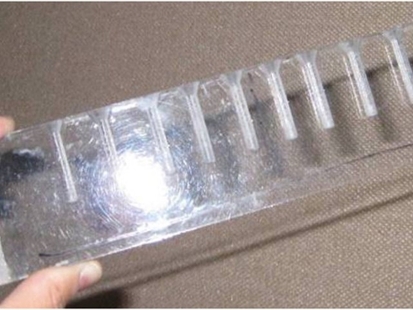
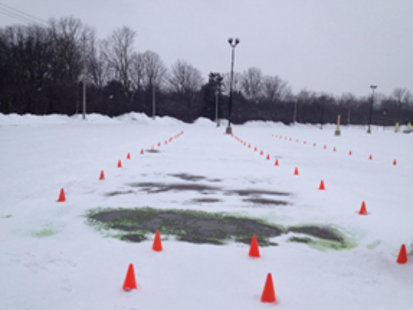
Project Output
Select Conference Presentations
- Hodgins, G., J.W. Roy, C. Power, C.E. Robinson, 2022. Multi-scale field investigations on the role of groundwater-surface water interactions in the freshwater salinization of an urban stream, American Geophysical Union (AGU) Fall Meeting, Chicago, IL.
- Hodgins, G., J.W. Roy, C. Power, C.E. Robinson, 2022. Benthic ecosystem exposure to road salt (chloride) associated with groundwater – stream interactions. GAC-MAC-IAH-CNC-CSPG Joint Meeting, Halifax, NS.
- Hodgins, G., J.W. Roy, C. Power, C.E. Robinson, 2021. Evaluating the spatial and temporal variability of groundwater chloride inputs to urban streams. American Geophysical Union (AGU) Fall Meeting, Virtual.
- Hodgins, G., J.W. Roy, C.E. Robinson, C. Power, 2021. Evaluating the seasonal variability of groundwater chloride inputs to urban streams. SETAC North America 42nd Annual Meeting, Virtual.
- Hodgins, G., J.W. Roy, C. Power, C.E. Robinson, 2021. Evaluating the seasonal variability of groundwater chloride impacts on urban streams. GeoNiagara 2021 (CGS/IAH-CNC Annual Meeting), Niagara Falls, ON.
Project Team
Project Leaders:
Jim Roy
Yolanda Hedberg
Project Members:
Emily Verkuil, MESc
Supporting Organziations:


